21 Home Remedies For Bleeding Gums | Causes & Prevention Tips
Keep your gums healthy with easy and effective natural solutions from your pantry.
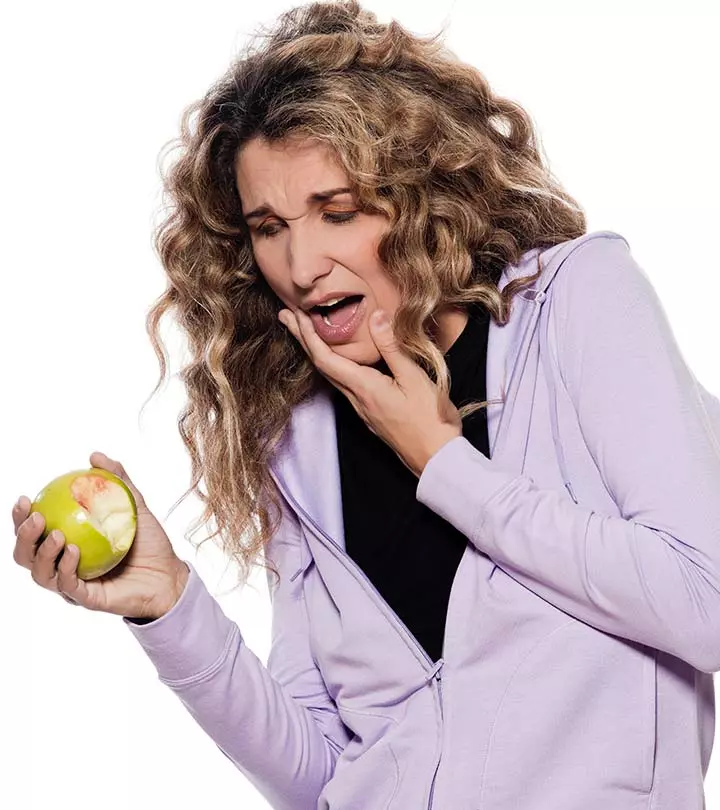
Image: Shutterstock

Gum bleeding may be a symptom of gingivitisi A gum condition resulting in irritated gums caused by oral hygiene issues, which, if left untreated, may lead to tooth loss. , or gum inflammation. It’s a frequent and moderate gum disease caused by plaque accumulation at the gumline. Home remedies for bleeding gums target the inflammation and pain that may accompany the bleeding while also removing plaque and possible bacterial buildup.
Bleeding gums, especially during brushing, may leave you feeling unconfident and discomforted about your oral health. We’ve compiled a list of natural cures and recommendations to help you deal with this uncomfortable condition. Continue reading.
In This Article
Home Remedies For Bleeding Gums
1. Coconut Oil
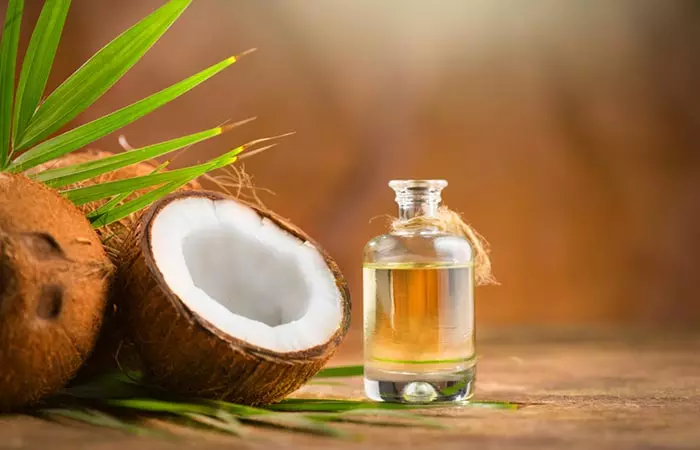
Coconut oil exhibits anti-inflammatory and antimicrobial properties (1), (2). This may reduce the inflammation in the gums and may help fight plaque.
You Will Need
1 tablespoon of coconut oil
What You Have To Do
Swish coconut oil in your mouth for 10-15 minutes.
How Often You Should Do This
Do this once a day.
2. Toothpaste
The fluoride in toothpaste helps reduce bacteria in the mouth and contributes to dental care
(3). Some toothpastes and mouth rinses also contain low concentrations of hydrogen peroxide to prevent gum inflammation.
You Will Need
Fluoride toothpaste
What You Have To Do
Brush your teeth with an ADA-approvedi A certification indicating validation from the American Dental Association that guarantees the dependability of a given dental product. fluoride toothpaste to combat the plaque on your gums.
How Often You Should Do This
Brush your teeth 2 times a day for best results.
Jennifer White, a blogger, shared her experience of using toothpaste for bleeding gums in her personal blog. She writes, “I thought it was a good idea since my gums bleed and are so sensitive. Interestingly, my gums began hurting terribly. I thought I was having an autoimmune flare. It took me around two weeks to figure out that the toothpaste for bleeding gums was irritating my gums. I quit using the toothpaste, and within 48 hours, my gums were fine again (i).” So it’s best to consult your dentist for personalized advice regarding gum bleeding.
3. Essential Oils
a. Tea Tree Oil
Tea tree oil exhibits powerful antiseptici A chemical that inhibits or retards microbial growth and is commonly used in surgery and other treatments. and antimicrobial properties (4). This may help in treating infections that cause bleeding gums. It also possesses anti-inflammatory properties (5). This may help in reducing inflammation and swelling of the gums.
You Will Need
- 1-2 drops of tea tree oil
- 1 teaspoon of coconut oil
What You Have To Do
- Mix a few drops of tea tree oil with a teaspoon of coconut oil.
- Massage this mixture gently into your gums.
- Leave it on for 5-10 minutes.
- Rinse your mouth thoroughly with water.
How Often You Should Do This
Do this 2 times a day.
b. Clove Oil
Clove oil is a popular folk home remedy for gum pain in general. It contains phenolic compounds like eugenol. This compound imparts anti-inflammatory and antibacterial properties to it (6), (7). Additionally, clove oil is also a natural analgesici A drug used to reduce one’s feeling of physical pain, with its applications seen in the cause of surgeries or injuries. (8). These properties may be highly effective in treating bleeding gums and gingivitis.
You Will Need
- 2 drops of clove oil
- 1 teaspoon of coconut oil
What You Have To Do
- Mix clove oil with coconut oil.
- Apply this blend directly to your bleeding gums.
- Leave it on for 5-10 minutes.
How Often You Should Do This
Do this 2 times a day.
4. Vitamins

Bleeding gums may be a result of vitamin C deficiencies (9). Hence, increase the intake of foods rich with vitamin C, such as citrus fruits, iron-rich foods, such as leafy vegetables, berries, peas, sprouts, and fish, meat, and eggs that contain omega-3 fatty acids.
Note: Consult a doctor before taking additional vitamin supplements.
5. Salt Water Mouth Rinse
Salt exhibits anti-inflammatory and antiseptic properties (10), (11). It also contains zinc that may help reduce the inflammation, swelling and combat infections that cause bleeding gums.
You Will Need
- 1 teaspoon of salt
- 1 glass of warm water
What You Have To Do
- Add a teaspoon of salt to a glass of warm water. Mix well.
- Rinse your mouth thoroughly with this saline solution.
How Often You Should Do This
Do this 2-3 times a day.
6. Honey
Honey exhibits strong antibacterial and anti-inflammatory properties (12), (13). The antibacterial properties may help against bacterial infections like gingivitis that cause gums to bleed. The anti-inflammatory properties may help reduce the inflammation and swelling of gums.
You Will Need
Honey
What You Have To Do
Take a little honey on your fingertips and massage it gently on your gums.
How Often You Should Do This
Do this 2 times a day.
7. Tea Bags
Tea contains a compound called tannic acid. This compound exhibits anti-inflammatory and antibacterial properties (14). These may help stop bleeding in the gums and kill the bacteria that cause the condition.
You Will Need
- 1 tea bag
- Hot water
What You Have To Do
- Soak a tea bag in hot water for 10-15 minutes.
- Remove it and allow it to cool.
- Place it on your gums and leave it on for 5 minutes.
How Often You Should Do This
Do this 1-2 times a day.
8. Milk
Milk contains high amounts of calcium (15). This may strengthen the gums and stop bleeding. Milk also possesses anti-inflammatory properties (16). This may help in reducing and soothing the inflammation caused by the condition.
You Will Need
1 cup of warm milk
What You Have To Do
Drink a cup of warm milk whenever your gums begin to bleed.
How Often You Should Do This
Do this 1-2 times a day.
Note: Brush your teeth after consuming milk to avoid the formation of plaques.
9. Cayenne Powder
Cayenne pepper is a rich source of a compound called capsaicin. Capsaicin exhibits anti-inflammatory properties (17). This may help in reducing the inflammation and swelling of the gums. It is also antibacterial (18). This may treat microbial infections that cause gums to bleed.
You Will Need
A pinch of cayenne pepper powder
What You Have To Do
1. Wet your toothbrush and add a pinch of cayenne pepper to it.
2. Brush your teeth.
How Often You Should Do This
Do this 1-2 times a day.
10. Cranberry Juice
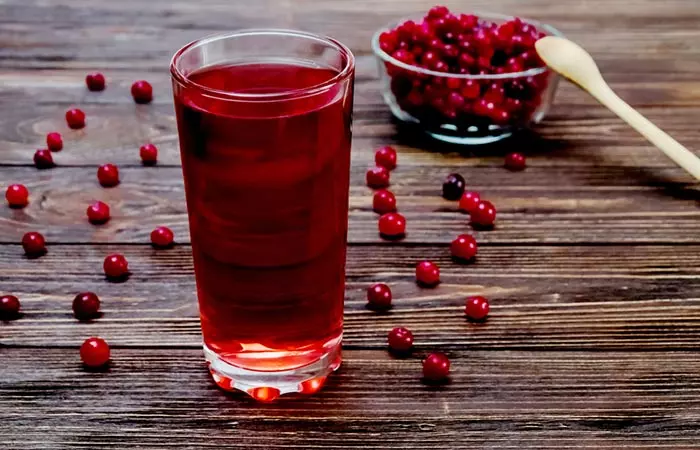
Cranberry juice contains compounds like anthocyanins and phenolic acids. These compounds exhibit anti-inflammatory and antimicrobial properties (19). Thus, cranberry juice may treat bleeding gums.
You Will Need
1 cup of unsweetened cranberry juice
What You Have To Do
Drink a cup of unsweetened cranberry juice.
How Often You Should Do This
Do this once a day.
11. Lemon Juice
Lemon has antibacterial and anti-inflammatory properties (20), (21). This may help in combating bacteria that makes the gum bleed and may also reduce inflammation.
You Will Need
- 1 lemon
- 1 cup of water
What You Have To Do
- Take a lemon and squeeze its juice.
- Mix the lemon juice with a cup of water.
- Use this solution to rinse your mouth after every meal.
How Often You Should Do This
Do this daily after every meal.
12. Oil Pulling
Research shows that oil pulling is good for oral health. It helps fight infections like gingivitis and periodontitisi Inflammation of the gums and surrounding tissue that frequently results in gum recession and tooth sensitivity. that cause the gums to bleed (22), (23). You can try using peppermint oil, as it helps in taking bad breath away too.
You Will Need
1 tablespoon of sesame oil or coconut oil
What You Have To Do
Swish sesame or coconut oil in your mouth for 10-15 minutes.
How Often You Should Do This
Do this once a day.
13. Turmeric
Turmeric contains a compound called curcumin. Curcumin exhibits anti-inflammatory and antimicrobial properties (24), (25). This may treat the inflammation and infection of gums.
You Will Need
- 1 teaspoon of turmeric powder
- 1/2 teaspoon of salt
- 1/2 teaspoon of mustard oil
What You Have To Do
- Mix the salt, mustard oil, and turmeric powder.
- Massage this mixture gently on your gums.
How Often You Should Do This
Do this 2 times a day.
14. Ginger

Ginger contains a compound called gingerol. This compound is known to exhibit exceptional anti-inflammatory and antibacterial properties (26), (27) . These may help heal inflamed gums and simultaneously treat the infections that cause them to bleed.
You Will Need
Grated ginger
What You Have To Do
- Grate ginger and squeeze its juice.
- Massage the ginger extract gently into your gums.
- Leave it on for 10-15 minutes.
How Often You Should Do This
Do this 1-2 times a day.
15. Aloe Vera
Aloe vera is well known for its healing properties. Its anti-inflammatory properties may reduce inflammation and bleeding (28). Moreover, it also exhibits antibacterial properties (29). They may be effective against oral pathogens that cause gum diseases like gingivitis.
You Will Need
1/2-1 teaspoon of aloe vera gel
What You Have To Do
Apply aloe vera gel to the bleeding gums with your fingertips.
How Often You Should Do This
Do this 2-3 times a day.
16. Baking Soda
Baking soda possesses antibacterial properties (30). This may kill the bacteria that cause the gums to bleed. It may also balance the pH in your mouth and may help remove plaques and stains on your teeth (31), (32).
You Will Need
- 1 teaspoon of baking soda
- 1 cup of warm water
What You Have To Do
- Add a teaspoon of baking soda to a cup of warm water.
- Use this water to rinse your mouth every now and then.
- Alternatively, you can also rub baking soda directly onto your gums.
How Often You Should Do This
Do this 2-3 times a day, preferably after meals.
17. Epsom Salt
Epsom salt is also known as magnesium sulfate. The magnesium in Epsom salt not only helps relieve inflammation but also fights the infections that cause your gums to bleed (33).
You Will Need
- 2 tablespoons of Epsom salt
- 1 cup of warm water
What You Have To Do
- Add two tablespoons of Epsom salt to a cup of warm water.
- Mix well and use this solution to rinse your mouth.
How Often You Should Do This
Do this 1-2 times a day.
18. Mustard Oil
Mustard oil exhibits anti-inflammatory and antimicrobial properties (34). This may treat oral infections and inflammation.
You Will Need
1/2 teaspoon of mustard oil
What You Have To Do
- Rub some mustard oil gently onto your gums.
- Leave it on for 5-10 minutes and then rinse your mouth with warm water.
How Often You Should Do This
Do this 2 times a day.
19. Neem
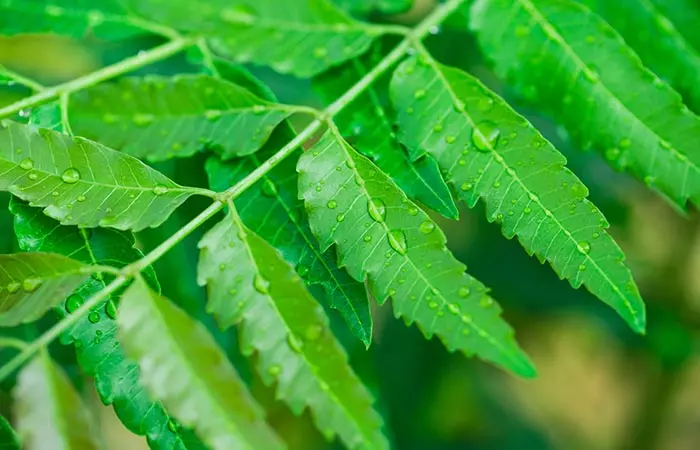
Neem leaves have been used for centuries for their healing and medicinal properties. They possess antimicrobial properties (35). This may help in combating bacterial and fungal infections that cause plaques and bleeding gums.
You Will Need
1 or 2 neem leaves
What You Have To Do
- Chew on neem leaves.
- Alternatively, you can also use toothpastes and mouthwashes that contain neem as a major ingredient.
How Often You Should Do This
You must do this on a daily basis, preferably after every meal.
20. Apple Cider Vinegar
Apple cider vinegar is a great home remedy for swollen gums. Acetic acid is the major component of apple cider vinegar. Acetic acid exhibits anti-inflammatory properties (36). This may help in relieving inflammation and swelling in the gums.
You Will Need
- 1 teaspoon of apple cider vinegar
- 1 cup of warm water
What You Have To Do
- Mix the apple cider vinegar with warm water.
- Use this solution to rinse your mouth.
How Often You Should Do This
Do this at least once a day.
21. Oregano Oil
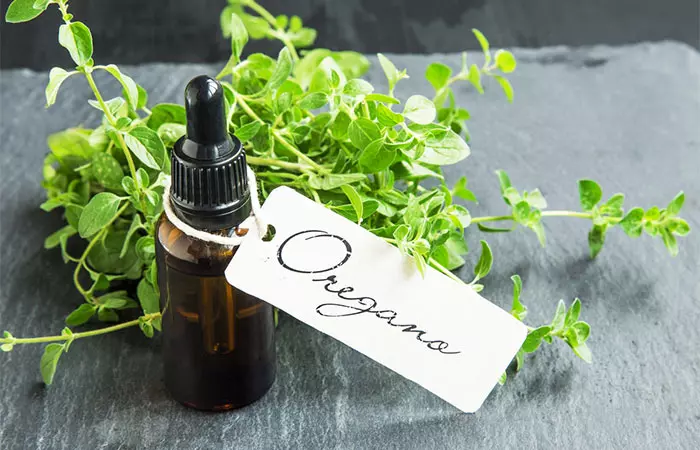
Oregano oil exhibits antimicrobial properties that may help in treating the infection causing bleeding in your gums. Additionally, it possesses anti-inflammatory properties that may help reduce gum inflammation and swelling (37). The carvacrol and magnolol present in oregano oil may also help combat oral infections (38). However, more research studies are warranted in this regard.
You Will Need
- 1-2 drops of oregano oil
- 1 teaspoon of coconut oil
- A cotton swab
What You Have To Do
- Mix the oregano oil with coconut oil.
- Dip a cotton swab into the diluted oregano oil mixture.
- Gently apply this mixture to the affected gums.
- Leave it on for 5-10 minutes.
- Rinse your mouth out thoroughly with water.
How Often You Should Do This
Do this twice a day.
 Quick Tip
Quick TipThese remedies may be effective if you use them and follow a few preventive tips as well. Given below are some tips that may prevent your gums from bleeding in the future and ensure that you follow a good oral hygiene routine.
Key Takeaways
- Hormonal changes, vitamin deficiencies, gingivitis, and periodontitis can cause bleeding gums.
- Swollen gums, bad breath, and loosening of teeth are a few symptoms of bleeding gums.
- Coconut oil and lemon juice help fight against infection and reduce inflammation.
- Brush your teeth twice daily and avoid smoking to prevent bleeding gums.
Tips To Prevent Bleeding Gums
Maintaining oral hygiene can help prevent many issues, such as:
- Brush your teeth twice daily, preferably after meals.
- Use a soft or medium bristled brush to clean your teeth to minimize trauma to the gums.
- Do not brush too harshly because it may damage the soft tissues of your gums.
- Flossing daily helps to remove the plaque between your teeth.
- Apply a cold compress to the bleeding gums to prevent further bleeding.
- Quit smoking and using tobacco.
- Consuming foods like yogurt rich in probiotics, cranberries, green tea, chamomile tea, soy, ginger, sage, and garlic can prevent bleeding and make your gums and teeth healthy.
- Regular dental check-ups may help lower the chances of developing gum disease.
- Using mouthwash regularly helps remove plaque and bacteria that cause gum inflammation.
Bleeding gums are the first and foremost signs of gum disease. They may also be caused due to other factors that are discussed below.
What Causes Bleeding Gums?
- Gingivitis: Plaques may form on the gum line if good oral hygiene is not maintained. The accumulation of these plaques may cause gingivitis, which, in turn, may lead to inflammation and bleeding of the gums.
- Periodontitis: When gingivitis is left untreated, and it continues to an advanced stage, it is known as periodontitis or periodontal disease. This leads to infection of the gums and the jaw. It may also cause the teeth to loosen and fall out.
- Vitamin C and vitamin K deficiencies
- Individuals wearing dentures may also experience bleeding gums.
- The hormonal changes during pregnancy may cause bleeding gums.
- Medical conditions, like hemophiliai A medical disorder where the blood's capacity to clot is significantly impaired, causing profuse bleeding even with little injuries. and leukemia, may also be an underlying cause of bleeding gums.
 Did You Know?
Did You Know?Since bleeding gums may also be a result of a serious underlying condition, they should not be disregarded. This condition may usually be painless and hence very difficult to identify. However, if you notice the onset of any of the following symptoms other than the obvious bleeding, it is a strong indication that you have developed this condition.
What Are The Signs And Symptoms Of Bleeding Gums?
The most common signs of bleeding gums include:
- Swollen and red gums
- Gums that recede from the tooth
- Constant bad breath or taste in the mouth
- Loosening of your teeth
- Formation of pus around your gums and teeth
- Bleeding and inflamed gums
Infographic: 5 Natural Ways To Treat Bleeding Gums
Bleeding gums are painful and compromise your oral health. Vitamin deficiencies, hormonal changes, or oral infections can cause this condition. The good news is that you can use simple natural ingredients to manage your bleeding gums at home. Scroll down and check out the infographic to know more!
Some thing wrong with infographic shortcode. please verify shortcode syntaxBleeding gums are the earliest indicators of gum disease and should be taken into regard. There may be a number of factors responsible for gum bleeding, including gingivitis, periodontitis, dentures, vitamin deficiencies, hormonal changes, and certain medical conditions. Loose teeth, bad breath, red and swollen gums, receding gums, and pus around gums and teeth are other symptoms accompanying bleeding gums. Unless there are underlying health conditions, home remedies for bleeding gums may suffice to alleviate the symptoms and restore oral health. Apple cider vinegar, neem leaves, mustard oil, baking soda, ginger, turmeric, milk, ta bags, honey, oil pulling, and salt water rinse are all effective and popular home remedies you can apply.
Frequently Asked Questions
What type of toothpaste is good for bleeding gums?
Fluoride toothpaste is good for bleeding gums.
Can a mouthwash stop swollen gums and bleeding gums?
A good antimicrobial mouthwash may reverse the effects of gingivitis and can also prevent inflamed and bleeding gums.
Why are my gums bleeding while brushing?
Gingivitis or the accumulation of plaque on your gums may often result in bleeding gums while brushing.
Why do gums bleed during pregnancy?
During pregnancy, your body undergoes many hormonal changes, which may cause your gums to bleed.
When to visit a dentist for bleeding gums?
If your gums continue to bleed despite treatments, it is best to consult a dentist to find out if you have an underlying medical condition.
Are bleeding gums dangerous?
Bleeding gums may sometimes be a symptom of a more serious disease like cancer or hemophilia and may prove to be dangerous in such situations. Also, if plaques are left untreated for too long, your oral health may deteriorate to such an extent that your teeth may begin to fall out.
Can stress cause bleeding gums?
Stress directly affects our immune system which can cause numerous dental issues like periodontal disease. Periodontal disease includes conditions like bleeding gums and pain (39).
Bleeding gums are a concern no more with easily available simple and natural remedies. Watch the following video on tips to reduce inflammation and stop bleeding of your gums.
Personal Experience: Source
StyleCraze's articles are interwoven with authentic personal narratives that provide depth and resonance to our content. Below are the sources of the personal accounts referenced in this article.
i. What Happened with My Teeth and Some Advicehttps://series-books.blogspot.com/2025/08/what-happened-with-my-teeth-and-some.html
References
Articles on StyleCraze are backed by verified information from peer-reviewed and academic research papers, reputed organizations, research institutions, and medical associations to ensure accuracy and relevance. Read our editorial policy to learn more.
- Intahphuak, S., P. Khonsung, and A. Panthong. “Anti-inflammatory, analgesic, and antipyretic activities of virgin coconut oil.” Pharmaceutical biology 48.2 (2010): 151-157.
https://pubmed.ncbi.nlm.nih.gov/20645831/ - Shilling, Michael, et al. “Antimicrobial effects of virgin coconut oil and its medium-chain fatty acids on Clostridium difficile.” Journal of medicinal food 16.12 (2013): 1079-1085.
https://pubmed.ncbi.nlm.nih.gov/24328700/ - Teke, Gerald Ngo, Ngolle Godwill Enongene, and Akah Roland Tiagha. “In vitro Antimicrobial activity of some commercial toothpastes.” Int J Curr Microbiol App Sci 6.1 (2017): 433-46.
https://www.semanticscholar.org/paper/In-vitro-Antimicrobial-Activity-of-Some-Commercial-Teke-Enongene/5b20e002f1b8bfc903a210e5246b26000ff20d9d?p2df - Carson, C. F., K. A. Hammer, and T. V. Riley. “Melaleuca alternifolia (tea tree) oil: a review of antimicrobial and other medicinal properties.” Clinical microbiology reviews 19.1 (2006): 50-62.
https://pubmed.ncbi.nlm.nih.gov/16418522/ - Hammer, Kate A., et al. “A review of the toxicity of Melaleuca alternifolia (tea tree) oil.” Food and chemical toxicology 44.5 (2006): 616-625.
https://www.sciencedirect.com/science/article/pii/S0278691505002899 - Han, Xuesheng, and Tory L. Parker. “Anti-inflammatory activity of clove (Eugenia caryophyllata) essential oil in human dermal fibroblasts.” Pharmaceutical biology 55.1 (2017): 1619-1622.
https://pubmed.ncbi.nlm.nih.gov/28407719/ - Nuñez, L., and M. D’Aquino. “Microbicide activity of clove essential oil (Eugenia caryophyllata).” Brazilian journal of microbiology 43.4 (2012): 1255-1260.
https://www.ncbi.nlm.nih.gov/pmc/articles/PMC3769004/ - Asl, Mina Kamkar, Ashraf Nazariborun, and Mahmoud Hosseini. “Analgesic effect of the aqueous and ethanolic extracts of clove.” Avicenna journal of phytomedicine 3.2 (2013): 186.
https://www.ncbi.nlm.nih.gov/pmc/articles/PMC4075701/ - Doll, Sébastien, and Bara Ricou. “Severe vitamin C deficiency in a critically ill adult: a case report.” European journal of clinical nutrition 67.8 (2013): 881-882.
https://idp.nature.com/transit?redirect_uri=https%3A%2F%2Fwww.nature.com%2Farticles%2Fejcn201342&code=6b81593b-172a-4138-b568-65321dba962b - Huynh, Nam Cong-Nhat, et al. “Rinsing with saline promotes human gingival fibroblast wound healing in vitro.” PloS one 11.7 (2016).
https://pubmed.ncbi.nlm.nih.gov/27441729/ - Wijnker, J. J., G. Koop, and L. J. A. Lipman. “Antimicrobial properties of salt (NaCl) used for the preservation of natural casings.” Food microbiology 23.7 (2006): 657-662.
https://pubmed.ncbi.nlm.nih.gov/16943065/ - Mandal, Manisha Deb, and Shyamapada Mandal. “Honey: its medicinal property and antibacterial activity.” Asian Pacific journal of tropical biomedicine 1.2 (2011): 154.
https://www.ncbi.nlm.nih.gov/pmc/articles/PMC3609166/ - Yaghoobi, Reza, and Afshin Kazerouni. “Evidence for clinical use of honey in wound healing as an anti-bacterial, anti-inflammatory anti-oxidant and anti-viral agent: A review.” Jundishapur journal of natural pharmaceutical products 8.3 (2013): 100.
https://www.ncbi.nlm.nih.gov/pmc/articles/PMC3941901/ - Ninan, Neethu, et al. “Antibacterial and anti-inflammatory pH-responsive tannic acid-carboxylated agarose composite hydrogels for wound healing.” ACS applied materials & interfaces 8.42 (2016): 28511-28521.
https://pubmed.ncbi.nlm.nih.gov/27704757/ - Scardina, G. A., and P. Messina. “Good oral health and diet.” BioMed Research International 2012 (2012).
https://www.ncbi.nlm.nih.gov/pmc/articles/PMC3272860/ - Stein, Sidney H., and David A. Tipton. “Vitamin D and its impact on oral health—an update.” Journal of the Tennessee Dental Association 91.2 (2011): 30.
https://pubmed.ncbi.nlm.nih.gov/21748977/ - Srinivasan, Krishnapura. “Biological activities of red pepper (Capsicum annuum) and its pungent principle capsaicin: a review.” Critical reviews in food science and nutrition 56.9 (2016): 1488-1500.
https://pubmed.ncbi.nlm.nih.gov/25675368/ - Marini, Emanuela, et al. “Antimicrobial and anti-virulence activity of capsaicin against erythromycin-resistant, cell-invasive group a streptococci.” Frontiers in microbiology 6 (2015): 1281.
https://www.ncbi.nlm.nih.gov/pmc/articles/PMC4643145/ - Blumberg, Jeffrey B., et al. “Cranberries and their bioactive constituents in human health.” Advances in Nutrition 4.6 (2013): 618-632.
https://www.ncbi.nlm.nih.gov/pmc/articles/PMC3823508/ - DE CASTILLO, Marta Cecilia, et al. “Bactericidal activity of lemon juice and lemon derivatives against Vibrio cholerae.” Biological and Pharmaceutical Bulletin 23.10 (2000): 1235-1238.
https://pubmed.ncbi.nlm.nih.gov/11041258/ - Maria Galati, Enza, et al. “Anti-inflammatory effect of lemon mucilage: in vivo and in vitro studies.” Immunopharmacology and immunotoxicology 27.4 (2005): 661-670.
https://pubmed.ncbi.nlm.nih.gov/16435583/ - Shanbhag, Vagish Kumar L. “Oil pulling for maintaining oral hygiene–A review.” Journal of traditional and complementary medicine 7.1 (2017): 106-109.
https://www.ncbi.nlm.nih.gov/pmc/articles/PMC5198813/#bib7 - Singh, Abhinav, and Bharathi Purohit. “Tooth brushing, oil pulling and tissue regeneration: A review of holistic approaches to oral health.” Journal of Ayurveda and integrative medicine 2.2 (2011): 64.
https://www.ncbi.nlm.nih.gov/pmc/articles/PMC3131773/ - Jurenka, Julie S. “Anti-inflammatory properties of curcumin, a major constituent of Curcuma longa: a review of preclinical and clinical research.” Alternative medicine review 14.2 (2009).
https://pubmed.ncbi.nlm.nih.gov/19594223/ - Zorofchian Moghadamtousi, Soheil, et al. “A review on antibacterial, antiviral, and antifungal activity of curcumin.” BioMed research international 2014 (2014).
https://www.ncbi.nlm.nih.gov/pmc/articles/PMC4022204/ - Grzanna, Reinhard, Lars Lindmark, and Carmelita G. Frondoza. “Ginger—an herbal medicinal product with broad anti-inflammatory actions.” Journal of medicinal food 8.2 (2005): 125-132.
https://pubmed.ncbi.nlm.nih.gov/16117603/ - Park, Miri, Jungdon Bae, and Dae‐Sil Lee. “Antibacterial activity of [10]‐gingerol and [12]‐gingerol isolated from ginger rhizome against periodontal bacteria.” Phytotherapy Research: An International Journal Devoted to Pharmacological and Toxicological Evaluation of Natural Product Derivatives 22.11 (2008): 1446-1449.
https://pubmed.ncbi.nlm.nih.gov/18814211/ - Vázquez, Beatriz, et al. “Antiinflammatory activity of extracts from Aloe vera gel.” Journal of ethnopharmacology 55.1 (1996): 69-75.
https://pubmed.ncbi.nlm.nih.gov/9121170/ - Jain, Supreet, et al. “Antibacterial effect of Aloe vera gel against oral pathogens: An in-vitro study.” Journal of clinical and diagnostic research: JCDR 10.11 (2016): ZC41.
https://www.ncbi.nlm.nih.gov/pmc/articles/PMC5198455/ - Drake, D. “Antibacterial activity of baking soda.” Compendium of continuing education in dentistry.(Jamesburg, NJ: 1995). Supplement 18.21 (1997): S17-21.
https://pubmed.ncbi.nlm.nih.gov/12017929/ - Newbrun, E. “The use of sodium bicarbonate in oral hygiene products and practice.” Compendium of continuing education in dentistry.(Jamesburg, NJ: 1995). Supplement 17.19 (1996): S2-7.
https://pubmed.ncbi.nlm.nih.gov/12017930/ - Mankodi, S. M., N. Conforti, and H. Berkowitz. “Efficacy of baking soda-containing chewing gum in removing natural tooth stain.” Compendium of continuing education in dentistry (Jamesburg, NJ: 1995) 22.7A (2001): 29-32.
https://pubmed.ncbi.nlm.nih.gov/11913307/ - Scully, Crispian, et al. “The effects of mouth rinses and dentifrice‐containing magnesium monoperoxyphthalate (mmpp) on oral microflora, plaque reduction, and mucosa.” Journal of clinical periodontology 26.4 (1999): 234-238.
https://pubmed.ncbi.nlm.nih.gov/10223394/ - Peng, Chao, et al. “Chemical composition, antimicrobial property and microencapsulation of Mustard (Sinapis alba) seed essential oil by complex coacervation.” Food chemistry 165 (2014): 560-568.
https://pubmed.ncbi.nlm.nih.gov/25038712/ - Mustafa, Mohammed. “Antibacterial efficacy of neem (Azadirachta indica) extract against Enterococcus faecalis: an in vitro study.” J Contemp Dent Pract 17.10 (2016): 791-794.
https://pubmed.ncbi.nlm.nih.gov/27794147/ - Johnston, Carol S., and Cindy A. Gaas. “Vinegar: medicinal uses and antiglycemic effect.” Medscape General Medicine 8.2 (2006): 61.
https://www.ncbi.nlm.nih.gov/pmc/articles/PMC1785201/ - Lopez, Nayely, et al. “Essential Oils of Oregano: Biological Activity beyond Their Antimicrobial Properties” US National Library of Medicine 22(6): 989.
https://www.ncbi.nlm.nih.gov/pmc/articles/PMC6152729/ - “Cicalau, Georgiana et al. “Anti-Inflammatory and Antioxidant Properties of Carvacrol and Magnolol, in Periodontal Disease and Diabetes Mellitus” US National Library of Medicine 26(22): 6899.
https://www.ncbi.nlm.nih.gov/pmc/articles/PMC8623889/ - Goyal, Sachin et al. “Stress and periodontal disease” US National Library of Medicine 22(1): 4–11.
https://www.ncbi.nlm.nih.gov/pmc/articles/PMC3895311/
Read full bio of Dr. Thomas Connelly
Read full bio of Sucharita Mishra
Read full bio of Arshiya Syeda
Read full bio of Dipti Sharma





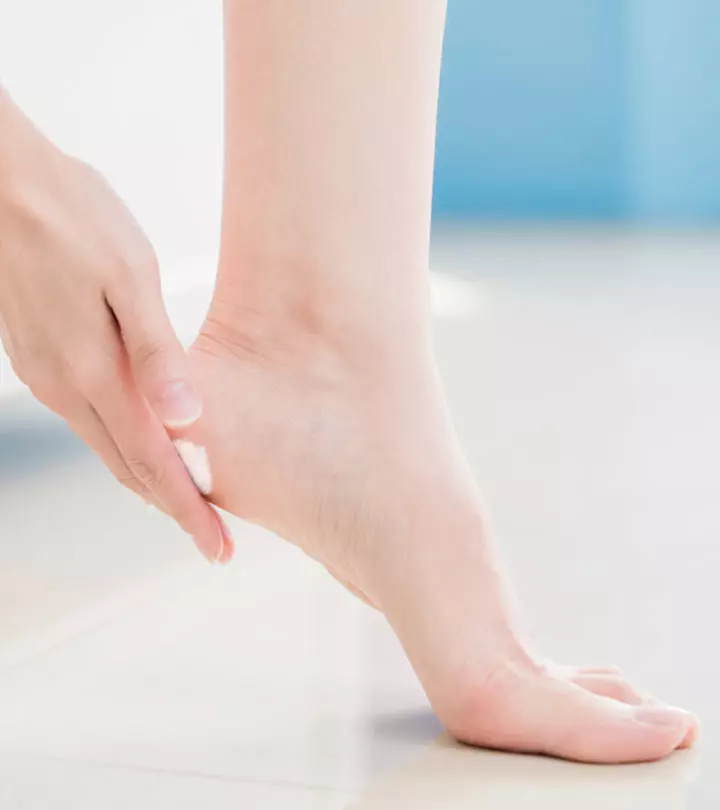


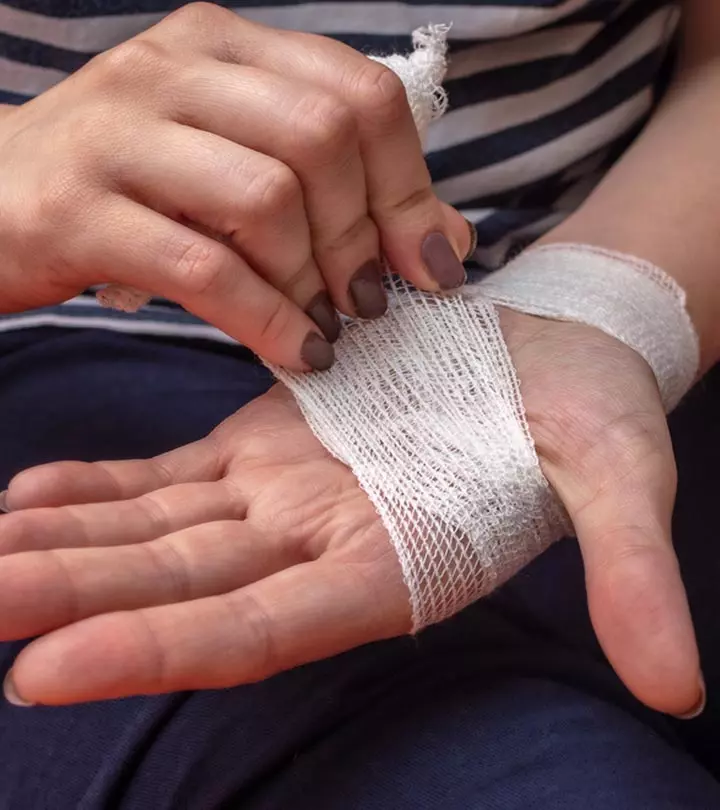
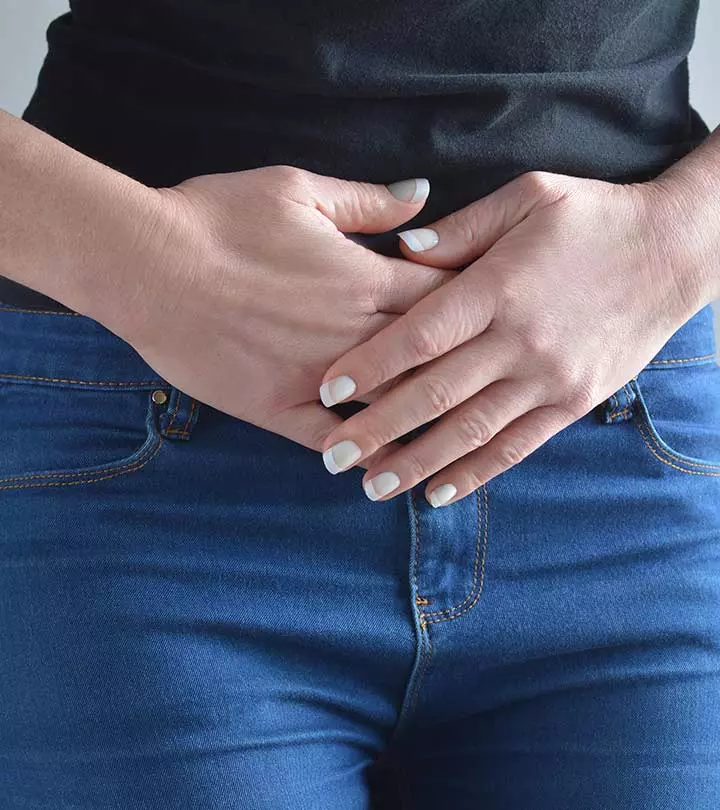


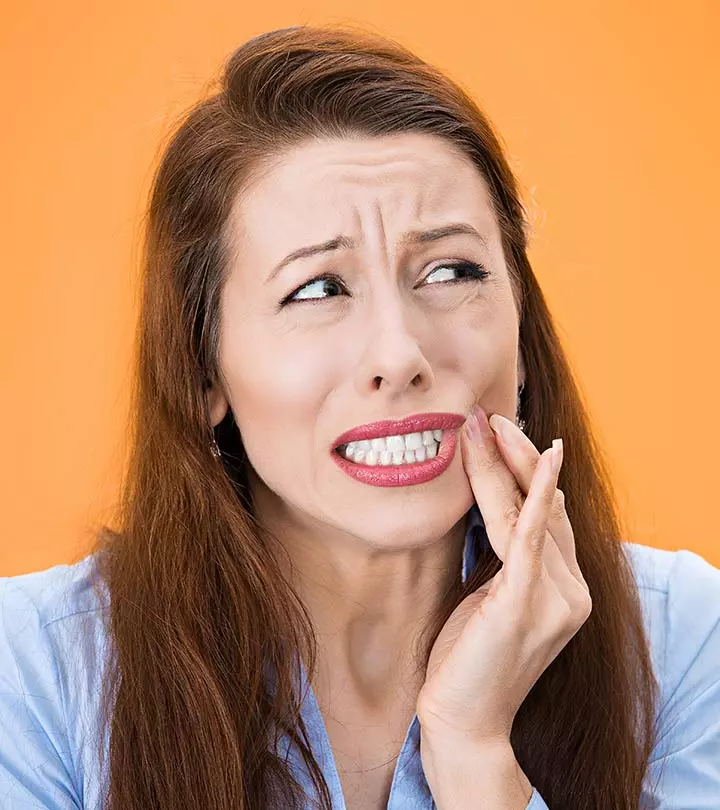


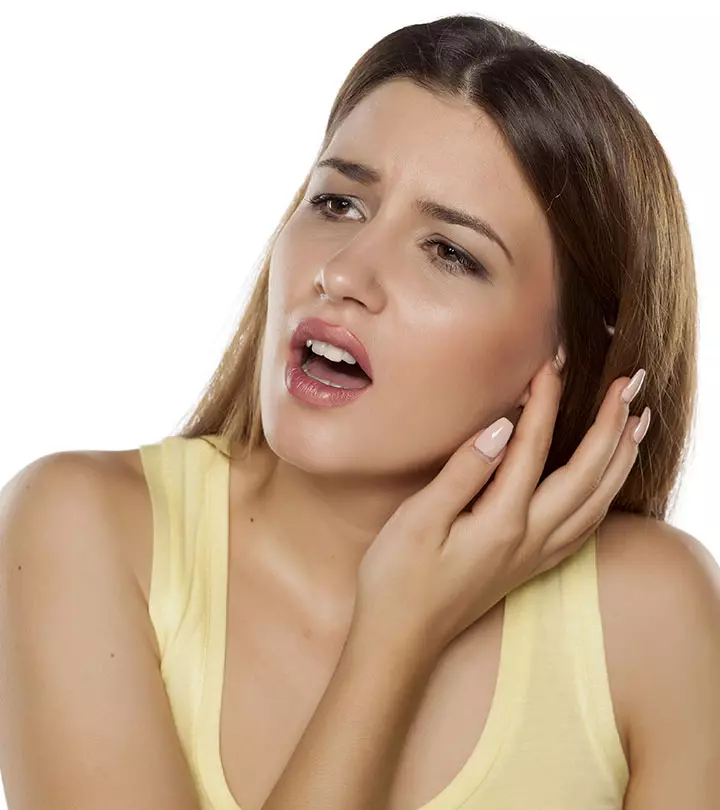


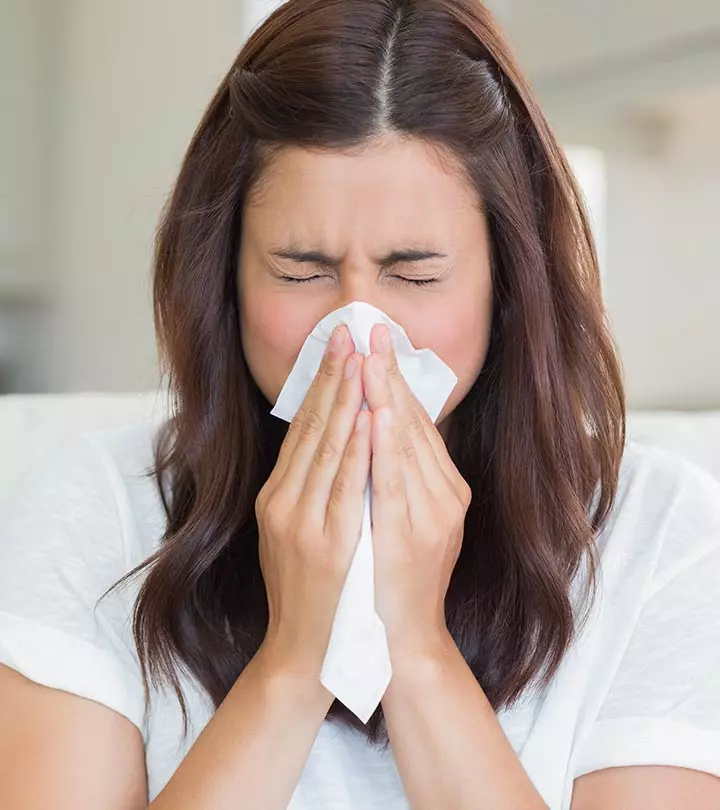

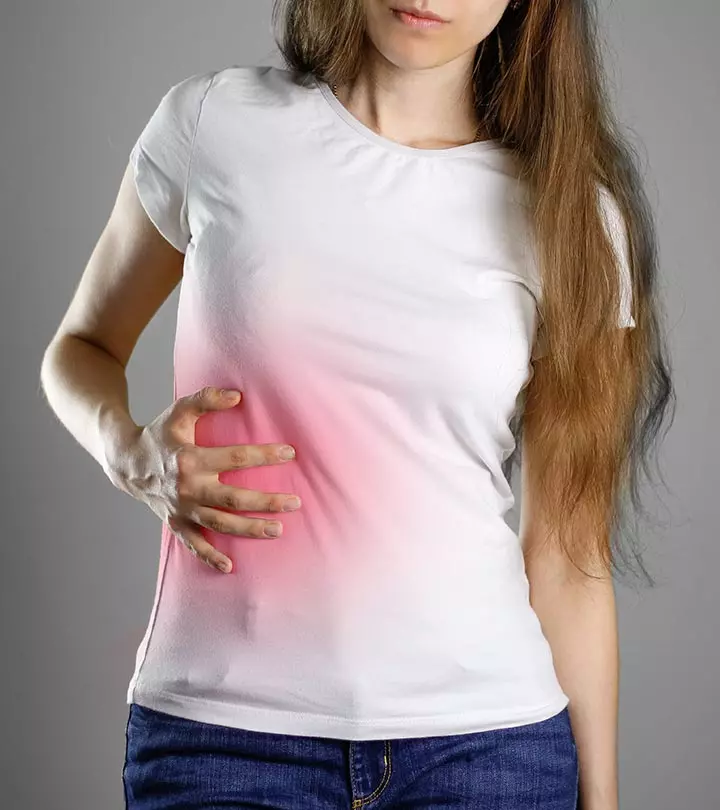


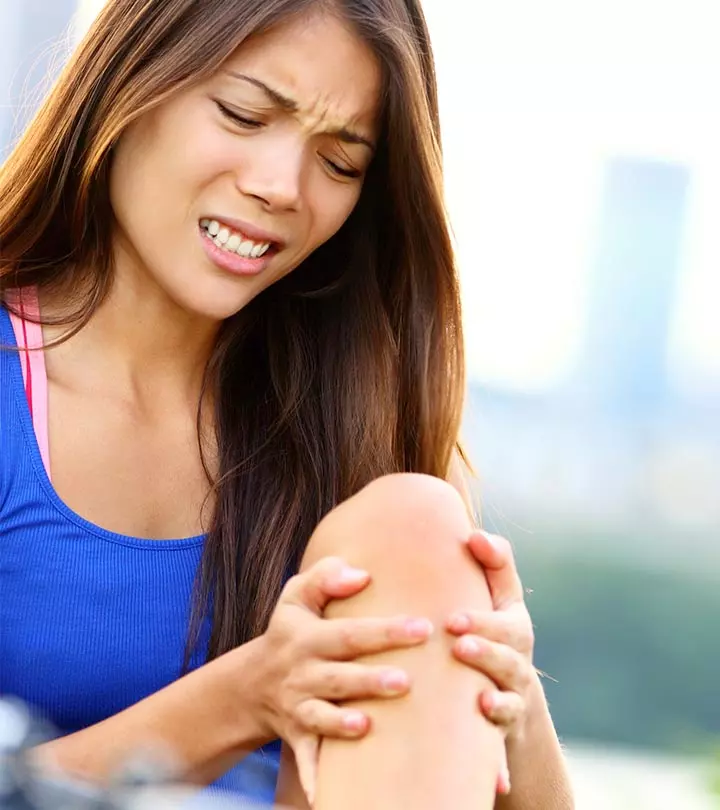
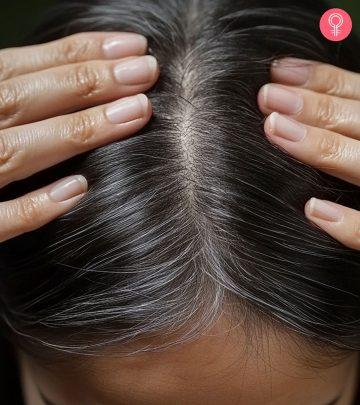
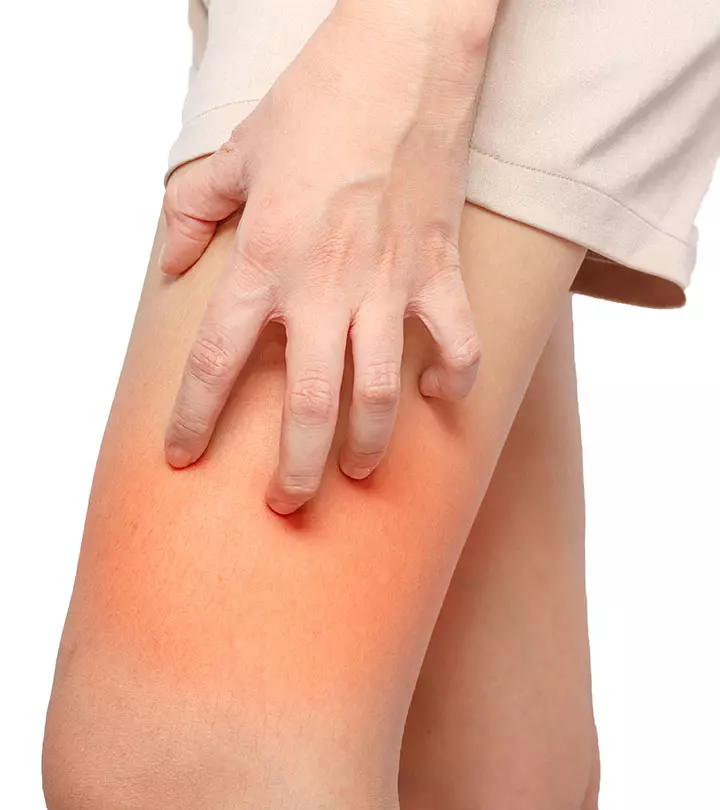
Community Experiences
Join the conversation and become a part of our empowering community! Share your stories, experiences, and insights to connect with other beauty, lifestyle, and health enthusiasts.